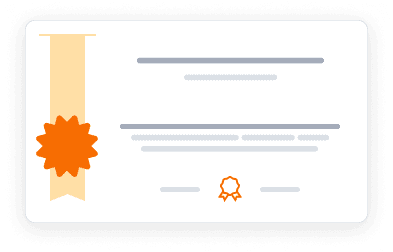Master brain activity analysis with fNIRS and eye tracking while developing practical skills for collecting and interpreting cognitive data.
Master brain activity analysis with fNIRS and eye tracking while developing practical skills for collecting and interpreting cognitive data.
This comprehensive course provides hands-on experience with advanced neuroscience methods for exploring how the brain supports perception, attention, memory, and emotion. You'll develop practical skills in collecting and analyzing data using tools such as functional near-infrared spectroscopy (fNIRS), eye tracking, and various biometric systems. Through detailed instruction and hands-on exercises, you'll learn to interpret complex neural imaging data, apply statistical tests to understand cognitive functions, and evaluate the strengths and limitations of different measurement approaches. The curriculum covers key techniques including neuroimaging analysis with NIRSLab and Excel, eye-tracking data interpretation with Tobii, and various physiological measurement methods. This unique combination of theory and practice equips you to design robust research studies, make informed decisions about appropriate measurement tools, and extract meaningful insights from neuroscience data. Whether you're a researcher, student, or professional in psychology or health-related fields, this course provides the technical expertise needed for innovative work in neuroscience.
Instructors:
English
Not specified
What you'll learn
Learn to collect and analyze neuroimaging data related to perception, attention, memory, and emotion using advanced tools
Analyze and interpret brain imaging data from fNIRS and apply statistical tests to understand cognitive functions
Understand biometric, physiological, and qualitative measurement methods, evaluating their suitability for different research goals
Analyze eye-tracking data to identify key metrics related to attention and information processing
Design robust research studies with appropriate neuroscience measurement techniques
Make informed decisions about selecting the right tools for specific research questions
Skills you'll gain
This course includes:
2.8 Hours PreRecorded video
10 assignments
Access on Mobile, Tablet, Desktop
Batch access
Shareable certificate
Get a Completion Certificate
Share your certificate with prospective employers and your professional network on LinkedIn.
Created by
Provided by

Top companies offer this course to their employees
Top companies provide this course to enhance their employees' skills, ensuring they excel in handling complex projects and drive organizational success.





There are 5 modules in this course
The Neuroscience Methods course offers a comprehensive exploration of advanced techniques used to study brain activity and cognitive functions. The curriculum begins with an introduction to neural imaging, focusing particularly on functional Near-Infrared Spectroscopy (fNIRS) technology and its applications. Students learn to collect, process, and analyze fNIRS data using specialized software like NIRSLab and Excel. The course then covers statistical approaches for analyzing neural data, including hypothesis testing and interpretation of results. Additional modules explore various biometric and physiological measurement methods, with special emphasis on eye-tracking technologies. The final section provides in-depth training on eye-tracking analysis using the Tobii platform, covering data import, visualization, and metrics interpretation. Throughout the course, students gain practical experience working with real datasets and learn to evaluate different neuroscience methods for specific research questions.
Course Introduction
Module 1 · 19 Minutes to complete
Neural Imaging
Module 2 · 5 Hours to complete
Neural Data Analysis
Module 3 · 1 Hours to complete
Biometric and Physiological Methods
Module 4 · 6 Hours to complete
Eye Tracking Analysis
Module 5 · 1 Hours to complete
Fee Structure
Instructors
Instructor associated with Johns Hopkins University
Ian McCulloh is an instructor associated with Johns Hopkins University, offering a variety of courses on Coursera. His expertise spans multiple areas, including AI project management, advanced probability and statistical methods, artificial intelligence in social media analytics, and more. His courses are designed to provide learners with a comprehensive understanding of AI applications and statistical methods. Ian McCulloh's courses are part of a broader curriculum that includes topics such as core concepts in AI, generative AI, and responsible AI ethics. His teaching focuses on practical applications of AI and statistical methods, making his courses valuable for both academic and professional development.
Instructor at Johns Hopkins University specializing in neuroscience
Jennifer McKneely is an instructor at Johns Hopkins University specializing in neuroscience. She teaches courses such as Foundations of Neuroscience, Neuroscience Methods, and Practical Neuromarketing Research on Coursera. Her work focuses on providing learners with a deep understanding of the principles of neuroscience, research methodologies, and their applications in fields like marketing and behavior analysis. Her courses are designed to bridge theoretical knowledge with practical applications, making them valuable for students and professionals aiming to explore the complexities of brain science and its implications in real-world contexts. Through her teachings, McKneely emphasizes the importance of neuroscience in understanding human behavior and decision-making processes.
Testimonials
Testimonials and success stories are a testament to the quality of this program and its impact on your career and learning journey. Be the first to help others make an informed decision by sharing your review of the course.
Frequently asked questions
Below are some of the most commonly asked questions about this course. We aim to provide clear and concise answers to help you better understand the course content, structure, and any other relevant information. If you have any additional questions or if your question is not listed here, please don't hesitate to reach out to our support team for further assistance.

-1741166404138.png&w=3840&q=75)


-1741166404138.png&w=256&q=75)
